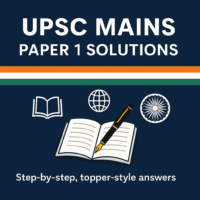Work Culture in India’s Public Services
Work Culture in India’s Public Services
The work culture in India’s public services, often perceived as a labyrinthine maze of bureaucracy, inefficiency, and red tape, is a world unto itself. It’s a place where time seems to move at a different pace, innovation is met with suspicion, and patience is not just a virtue but a survival skill. So, grab your cup of chai and join me on a satirical journey through the corridors of power and paperwork that define the Indian public services.
- The Bureaucratic Ballet: An Introduction
Entering the world of Indian public services is akin to stepping into an elaborate ballet performance. Each move is calculated, every step has been choreographed over decades, and innovation is often seen as an unwelcome break in tradition.
- First Day Jitters: Imagine starting your first day at a government office, eager to make a difference. Your enthusiasm is met with the sight of dusty files stacked to the ceiling, a computer from the Jurassic era, and a senior officer who greets you with, “Why so early? It’s just 11 AM!”
- The Art of Doing Nothing
Mastering the art of doing nothing is a revered skill in public services. It’s an intricate dance where appearing busy is more important than actually being busy.
- The Tea Break Ritual: Every task, no matter how small, is preceded by a Tea break, followed by discussions about the tea break. The actual work? That’s for later, much later.
- Endless Meetings: Meetings are an art form. They involve lengthy discussions about the importance of the meeting, followed by a decision to hold another meeting. Action points? What are those?
- The Filing System: A Black Hole
Files are the lifeblood of the public service ecosystem. They move at the speed of a tortoise with a penchant for naps.
- The File’s Journey: A file’s journey from one desk to another is nothing short of epic. It involves stamps, signatures, and an occasional spill of tea. The file’s final destination? Usually another pile of files.
- The Vanishing Act: Files have a mysterious tendency to disappear, only to resurface months later. “It’s not lost; it’s just on a holiday,” quips the office joker.
- Innovation? What’s That?
In public services, innovation is viewed with the same suspicion as a cat eyeing a cucumber.
- The Fear of Change: Propose a new system to streamline processes, and you’ll be met with a look of horror. “Why change something that’s been working (or not) for decades?” asks the veteran bureaucrat.
- The Legacy Systems: Computers are revered relics, and the idea of upgrading them is considered blasphemy. “These machines have served us well since the ’90s; they have character,” boasts the IT department.
- The Hierarchical Himalaya
Hierarchy in public services is as imposing as the Himalayas. Climbing it requires a mix of patience, perseverance, and a knack for flattery.
- Titles Over Talent: Your title defines you, not your talent. The higher your title, the more profound your wisdom is presumed to be, regardless of your actual contribution.
- The Power of the Peon: Never underestimate the peon. They are the gatekeepers of all information, the true power brokers. Befriending them can unlock doors faster than any official request.
- The Great Indian Lunch Hour
Lunch hour in public services is a sacred time. It’s an elaborate affair that can easily extend to two hours, incorporating a post-lunch nap.
- Tiffin Time: Colleagues exchange tiffins with the enthusiasm of school kids trading Pokemon cards. “What did your wife pack today?” is a common conversation starter.
- Post-Lunch Siesta: After a hearty meal, a quick nap at the desk is not frowned upon; it’s almost encouraged. “A well-rested employee is a productive employee,” says the office philosopher.
- The Audit Alarm
The mere mention of an audit sends waves of panic through the office. It’s a time when everyone suddenly discovers the joys of meticulous record-keeping.
- The Scramble: Papers are shuffled, files are dusted off, and everyone dons a look of utmost concentration. “Where did we put that report from 2005?” is a common cry.
- The Blame Game: Finding the missing document becomes a game of hot potato. “I’m sure I handed it over to you last year,” is the standard defense.
- The Festival Frenzy
Public services come alive during festivals. It’s a time of camaraderie, celebrations, and of course, extended holidays.
- Decorations Galore: Offices are adorned with decorations, and the air is filled with festive cheer. “Who’s bringing the sweets?” is the most important agenda item.
- Holiday Hiccups: Work takes a backseat as everyone gears up for the festivities. “Let’s pick this up after Diwali,” is a common refrain, even if Diwali is months away.
- The Training Trance
Training sessions are a regular feature in public services, often seen as a welcome break from the daily grind.
- The Yawning Festival: Training sessions are synonymous with long, monotonous lectures that induce synchronized yawning. “Is it break time yet?” is the most asked question.
- The Certification Ceremony: At the end of the training, certificates are handed out with much fanfare. “Another one for my collection,” says the serial trainee.
- The Retirement Reverie
Retirement is viewed as the ultimate milestone, celebrated with pomp and a hint of envy from younger colleagues.
- The Farewell Bash: Retirement parties are grand affairs, complete with speeches, gifts, and a slideshow of the retiree’s illustrious (read: long) career.
- The Wisdom Transfer: The retiree shares pearls of wisdom, often advising against taking work too seriously. “Remember, the system will run without you,” they say, leaving everyone in deep thought.
Conclusion
The work culture in India’s public services is a rich tapestry of traditions, quirks, and unique practices that blend to create an environment unlike any other. It’s a place where humor thrives amidst the paperwork, where every delay has a story, and where the people make the system truly interesting.
Despite its inefficiencies and idiosyncrasies, the public service is a crucial pillar of governance in India. It’s a world where one learns to navigate the complexities of bureaucracy, build resilience, and, most importantly, find joy in the everyday absurdities.
So, the next time you find yourself at a government office, remember to appreciate the subtle humor, the unspoken rules, and the incredible patience that define this fascinating world. After all, in the words of a wise bureaucrat, “Why rush when you have a lifetime to serve?”
The Positives and Negatives of Work Culture in Indian Government Departments
The work culture in Indian government departments is a unique blend of tradition, hierarchy, and a pace that would make a snail proud. Here, we explore the positives and negatives with a touch of humor, because if you can’t laugh about it, you might just cry!
Positives
- Job Security: Like a Family Heirloom
- Positive: Once you’re in, you’re in for life. Your job is more secure than the Kohinoor diamond.
- A Civil Servant’s Take: It’s so secure, you could doze off at your desk and still be up for a promotion!
- Work-Life Balance: More Life, Less Work
- Positive: You’ll have plenty of time for family, hobbies, and maybe even a side hustle.
- A Civil Servant’s Take: Who needs flexible hours when your 9 to 5 often feels like 11 to 4? Plus, long lunch breaks ensure you’re always well-fed and well-rested.
- Perks and Benefits: The Government Goodies
- Positive: From medical benefits to travel allowances, the perks are pretty sweet.
- A Civil Servant’s Take: Need a holiday? Just get transferred to a scenic location. It’s like a government-sponsored vacation!
- Leave Policies: Like Summer Vacations in School
- Positive: Generous leave policies ensure you can take off when you need to.
- A Civil Servant’s Take: With so many types of leave – casual leave, medical leave, earned leave – you might spend more time planning your leaves than actually working!
- Less Stress: Easy Breezy
- Positive: The pace of work ensures that stress levels are relatively low.
- A Civil Servant’s Take: Deadlines? What are those? The only thing urgent here is the tea break schedule.
- Networking Opportunities: Friends in High Places
- Positive: Working in government allows you to build connections that can be useful both personally and professionally.
- A Civil Servant’s Take: Need a favor? Just know the right babu. From ration cards to railway tickets, networking here can get you anything!
- Learning Patience: The Ultimate Test
- Positive: You’ll develop a zen-like patience waiting for processes to move.
- A Civil Servant’s Take: You’ll become so patient, you could meditate through a hurricane. Waiting for approvals is the ultimate mindfulness practice.
Negatives
- Bureaucracy: The Red Tape Tango
- Negative: Excessive paperwork and slow processes can be frustrating.
- A Civil Servant’s Take: Need a simple approval? Be prepared to navigate a maze of signatures, stamps, and files that seem to have a life of their own. It’s like trying to solve a Rubik’s Cube blindfolded!
- Innovation Resistance: The Dinosaur Syndrome
- Negative: Change is often met with resistance, making innovation difficult.
- A Civil Servant’s Take: Suggest a new idea and you’ll be met with the same enthusiasm as a cat facing a bath. “But we’ve always done it this way,” is the battle cry.
- Lack of Accountability: The Blame Game
- Negative: It’s often unclear who is responsible for what, leading to a lack of accountability.
- A Civil Servant’s Take: When things go wrong, the blame game begins. It’s like a game of musical chairs, but with more finger-pointing and less fun.
- Hierarchy Overload: The Ladder to Nowhere
- Negative: Rigid hierarchies can stifle creativity and slow decision-making.
- A Civil Servant’s Take: Hierarchies are so rigid, even your boss’s boss has a boss. Climbing the ladder feels more like scaling Everest – without oxygen.
- Slow Career Progression: The Tortoise Race
- Negative: Promotions and career advancements can take a long time.
- A Civil Servant’s Take: You’ll move up the ranks at the pace of a tortoise with a limp. But hey, slow and steady wins the race, right?
- Office Politics: The Game of Thrones
- Negative: Navigating office politics can be tricky and exhausting.
- A Civil Servant’s Take: Office politics here are more intricate than a soap opera. Alliances shift, thrones are contested, and gossip is the currency of choice.
- Resource Constraints: The Great Shortage
- Negative: Often, there are not enough resources to get the job done efficiently.
- A Civil Servant’s Take: You’ll find yourself using stationery from the 80s and computers that belong in a museum. “Make do with what you have” is the office motto.
- Lack of Recognition: The Invisible Employee
- Negative: Hard work often goes unnoticed, with few incentives for going above and beyond.
- A Civil Servant’s Take: You could cure cancer and still not get a pat on the back. The only recognition you might get is from the office janitor who sees you burning the midnight oil.
Conclusion
The work culture in Indian government departments is a fascinating mix of the good, the bad, and the downright hilarious. While the system has its flaws, it also has its charm. Job security, generous benefits, and a relaxed pace make it an attractive option for many, even as bureaucracy, resistance to change, and office politics present significant challenges.
In the end, thriving in this environment requires a sense of humor, a lot of patience, and an appreciation for the quirks that make the Indian public service uniquely entertaining. So, whether you’re a seasoned government employee or a newbie navigating the corridors of power, remember to laugh a little. After all, in the grand scheme of things, it’s all part of the experience.
Improving the Work Culture
Improving the work culture in Indian government departments is crucial for enhancing efficiency, accountability, and public satisfaction. As a public servant officer, here are some practical steps and strategies to foster a positive and productive work environment.
Steps to Improve Work Culture
- Promote Transparency and Accountability
- Initiate Open Communication: Foster an environment where open and honest communication is encouraged. Regularly update employees about organizational goals, changes, and policies.
- Set Clear Expectations: Define roles and responsibilities clearly to avoid ambiguity. Implement a system where performance metrics are transparently shared and reviewed.
- Implement E-Governance: Use technology to streamline processes and make information accessible to both employees and the public. Digital platforms can reduce corruption and enhance accountability. For example: e-office
- Enhance Training and Development
- Regular Training Programs: Conduct workshops and training sessions to update employees on the latest practices, technologies, and policies.
- Mentorship Programs: Pair new employees with experienced mentors to guide them through the nuances of public service and instill best practices.
- Encourage Continuous Learning: Provide opportunities for further education and skill development. Online courses and certifications can be valuable.
- Foster a Collaborative Environment
- Team Building Activities: Organize team-building exercises to strengthen relationships and improve cooperation among employees.
- Inter-Departmental Projects: Encourage collaboration across departments to break down silos and foster a sense of unity and shared purpose.
- Feedback Mechanisms: Create channels for employees to provide feedback on processes, policies, and work conditions. Use this feedback to make improvements.
- Improve Work-Life Balance
- Flexible Working Hours: Introduce flexible working hours and remote working options where feasible. This can boost morale and reduce burnout.
- Health and Wellness Programs: Promote physical and mental well-being through wellness programs, health camps, and stress management workshops.
- Leave Policies: Ensure that leave policies are employee-friendly and that employees are encouraged to take their allotted leave.
- Recognize and Reward Performance
- Performance Incentives: Implement a system of rewards and recognition for outstanding performance. This can include monetary bonuses, awards, and public recognition.
- Career Advancement Opportunities: Provide clear paths for career advancement based on merit and performance. Regular appraisals and promotions can motivate employees.
- Appreciation Culture: Regularly appreciate and acknowledge the hard work of employees. Even small gestures of appreciation can significantly boost morale.
- Streamline Processes and Reduce Bureaucracy
- Process Reengineering: Continuously evaluate and streamline administrative processes to eliminate unnecessary steps and reduce red tape.
- Empower Employees: Delegate authority to empower employees to make decisions and take ownership of their work. This can lead to quicker decision-making and increased accountability.
- Adopt Best Practices: Learn from successful models within and outside the country. Implement best practices that have proven effective in other organizations.
- Ensure Ethical Standards
- Ethics Training: Conduct regular training on ethical behaviour and integrity. Emphasize the importance of honesty and transparency in public service.
- Whistleblower Protection: Establish a robust whistleblower policy to protect those who report unethical practices.
- Strict Anti-Corruption Measures: Implement and enforce strict anti-corruption measures. Regular audits and vigilance can deter unethical behaviour.
Implementing These Strategies as a Public Servant Officer
- Lead by Example: Demonstrate transparency, integrity, and commitment to your team. Your behaviour sets the standard for others.
- Engage with Employees: Regularly interact with your team to understand their challenges and provide support. Conduct town hall meetings, one-on-one sessions, and surveys to gather insights.
- Pilot Programs: Implement pilot programs to test new ideas and processes. Collect feedback, make necessary adjustments, and then scale up successful initiatives.
- Foster Innovation: Encourage employees to come up with innovative solutions to problems. Create a platform where they can share ideas and implement the best ones.
- Monitor Progress: Set clear goals and monitor the progress of various initiatives. Use key performance indicators (KPIs) to measure success and make data-driven decisions.
- Celebrate Successes: Celebrate the milestones and successes achieved by your team. This can create a positive and motivating work environment.
Conclusion
Improving the work culture in Indian government departments requires a multi-faceted approach that focuses on transparency, accountability, employee welfare, and continuous improvement. As a public servant officer, your leadership and commitment to these principles can drive significant positive change. By fostering an environment of collaboration, innovation, and ethical behaviour, you can help build a more efficient, responsive, and motivated public service.
Work Culture of Indian Public Sector vs. Private Sector:
Navigating the work cultures of the Indian public sector and private sector is like comparing a leisurely bicycle ride to a high-speed roller coaster. Both are unique, with their own set of quirks and characteristics that make them distinctly different. Let’s dive into this amusing comparison through some personal examples and observations from the years of 2015-2020.
- Job Security: The Great Divide
- Public Sector: Job security in the public sector is akin to a fairy tale ending – “And they lived happily ever after.” Once you’re in, you’re set for life, barring any extraordinary mishaps.
- Example: Imagine a government employee who’s been napping at his desk since the 1980s. He’s now a senior officer, and no one dares wake him up because he’s considered a “pillar of the department.”
- Private Sector: In the private sector, job security is more like riding a unicycle on a tightrope – thrilling but precarious. Performance reviews are your balancing act.
- Example: You could be the star performer of the year, but miss a few targets, and suddenly you’re “pursuing other opportunities” – often involuntarily!
- Workload and Pace: The Tortoise and the Hare
- Public Sector: The pace here is leisurely, like a tortoise on a Sunday stroll. There’s always tomorrow, and if not tomorrow, then next week.
- Example: Filing a request for a new chair? Expect it to arrive just in time for your retirement party. “Good things come to those who wait,” they say – in the public sector, it’s practically a mantra. Many of you must have watched Panchayat Season 1 on Amazon prime. When the monitor from the panchayat office was stolen, the “Up-Pradhan” said no need to worry let’s write an application to the higher ups and we will get a new one. The secretary asked how much time it would take, to which up-Pradhan replied 6-12 months!
- Private Sector: It’s more like the hare, constantly in a rush, with deadlines that seem to be on steroids. Every day feels like a sprint.
- Example: By the time you’ve filed your expense report, you’ve already been reimbursed, had your desk moved, and completed three new projects. Blink, and you might miss your entire appraisal cycle.
- Lunch Breaks: Feast vs. Famine
- Public Sector: Lunch breaks are sacred and can easily stretch to two hours, including the unofficial pre-lunch tea break and the post-lunch nap.
- Example: A lunch break involves sharing homemade tiffins, discussing the latest cricket match, and possibly squeezing in a siesta. It’s a culinary and social marathon.
- Private Sector: Lunch breaks are more like pit stops in a Formula 1 race – quick, efficient, and over before you know it.
- Example: You’re juggling a sandwich in one hand, responding to emails with the other, and attending a virtual meeting where you hope no one notices your chewing.
- Meetings: The Battle of Lengths
- Public Sector: Meetings are long, ceremonial, and often involve discussions about holding more meetings. It’s an art form perfected over decades.
- Example: A one-hour meeting can span three hours, with the first half-hour spent discussing the agenda and the next hour revisiting the minutes of the previous meeting.
- Private Sector: Meetings are quick, frequent, and to the point – most of the time. Efficiency is key, and PowerPoint slides are the weapon of choice.
- Example: A 30-minute meeting is packed with data, decisions, and action points, and you might leave with more work than you started with. Blink, and you’ve missed the critical part.
- Technology: The Old Guard vs. The Cutting Edge
- Public Sector: Technology adoption is often slow, with a fondness for legacy systems. Fax machines and dot matrix printers are still revered.
- Example: You might see an office with the latest flat-screen TV mounted next to a typewriter that’s still in use. The motto? “Why fix what isn’t broken (even if it creaks)?”
- Private Sector: Cutting-edge technology is embraced with open arms. The latest software and gadgets are considered essential for staying ahead.
- Example: By the time you’ve figured out the current project management tool, the company has already moved on to the next version, and you’re left with a pile of user manuals.
- Hierarchy: The Vertical vs. The Horizontal
- Public Sector: Hierarchy is as steep as the Himalayas, and climbing it is an endurance sport. Titles and ranks are everything.
- Example: You need approval from three departments just to change the light bulb above your desk. “It’s above my pay grade” is not just an excuse; it’s a way of life.
- Private Sector: Flatter hierarchies are more common, with an emphasis on collaboration and teamwork.
- Example: You could be discussing the next big project over coffee with the CEO. Titles matter, but ideas matter more.
- Performance Reviews: The Great Expectations
- Public Sector: Performance reviews are a formality, often more about tenure than actual performance.
- Example: Your review might involve ticking boxes and nodding in agreement. Promotions are often based on “time served” rather than “tasks completed.”
- Private Sector: Performance reviews are critical and can make or break your career.
- Example: You enter the review hoping for a raise and leave with a “development plan” that feels more like a shopping list of your shortcomings.
Conclusion
The work culture in Indian public sector and private sector organizations couldn’t be more different. The public sector is a land of stability, long lunch breaks, and leisurely pace, while the private sector thrives on speed, efficiency, and innovation. Each has its own charm and challenges, and navigating these cultures requires a sense of humor and adaptability.
So, whether you’re an unhurried tortoise in the public sector or a speedy hare in the private sector, remember to laugh at the quirks and enjoy the ride. After all, every workplace has its own unique flavor, and sometimes, it’s the differences that make the journey interesting.
what can government public sector learn from Private sector in india concerning work culture
Improving the work culture in Indian government public sector organizations by learning from the private sector can lead to enhanced efficiency, accountability, and employee satisfaction. Here are some key lessons that the public sector can adopt from the private sector, along with practical examples and strategies:
- Performance-Based Incentives
Lesson:
- Private Sector: Rewards employees based on performance, encouraging productivity and innovation.
Implementation:
- Public Sector: Introduce performance-based incentives and recognition programs to motivate employees. At present, everyone gets promoted In the government sector which de motivates the excellent performers.
- Example: Establish clear performance metrics and offer bonuses, promotions, or public recognition for high-performing employees.
- Streamlined Processes
Lesson:
- Private Sector: Focuses on streamlining processes to enhance efficiency and reduce bureaucracy.
Implementation:
- Public Sector: Simplify and automate administrative processes to minimize red tape and expedite decision-making.
- Example: Use digital platforms for approvals and workflow management to reduce paperwork and processing time.
- Accountability and Transparency
Lesson:
- Private Sector: Emphasizes accountability and transparency in operations and decision-making.
Implementation:
- Public Sector: Implement clear accountability frameworks and transparency measures.
- Example: Regularly publish performance reports and audit results. Encourage whistleblowing with protection for those who report unethical practices.
- Embracing Technology
Lesson:
- Private Sector: Quickly adopts new technologies to stay competitive and efficient.
Implementation:
- Public Sector: Invest in modern technology and training to enhance service delivery and internal processes.
- Example: Deploy e-governance tools, online portals for public services, and modern IT infrastructure for internal operations.
- Employee Development and Training
Lesson:
- Private Sector: Prioritizes continuous learning and skill development for employees.
Implementation:
- Public Sector: Offer regular training programs and opportunities for professional development.
- Example: Partner with educational institutions and private training providers to offer courses in management, technology, and specialized skills.
- Flexible Work Environment
Lesson:
- Private Sector: Provides flexible work arrangements to improve work-life balance and productivity.
Implementation:
- Public Sector: Introduce flexible working hours and remote working options where feasible.
- Example: Allow employees to work from home certain days of the week and implement flexi-hours for better work-life balance.
- Customer-Centric Approach
Lesson:
- Private Sector: Focuses on customer satisfaction and user experience.
Implementation:
- Public Sector: Adopt a citizen-centric approach in service delivery and public interactions.
- Example: Implement feedback mechanisms to gather input from citizens and use this data to improve services. Train employees in customer service skills.
- Lean Organizational Structure
Lesson:
- Private Sector: Often maintains a lean organizational structure to reduce overhead and increase agility.
Implementation:
- Public Sector: Review and optimize organizational structures to eliminate redundant roles and improve efficiency.
- Example: Conduct regular reviews of department structures and streamline where necessary to focus on core functions.
- Innovation and Risk-Taking
Lesson:
- Private Sector: Encourages innovation and calculated risk-taking to drive growth and improvement.
Implementation:
- Public Sector: Create an environment that supports innovation and allows for pilot projects and experimentation.
- Example: Set up innovation labs or task forces to explore new ideas and pilot innovative projects with the potential for scaling up successful initiatives.
- Performance Reviews and Feedback
Lesson:
- Private Sector: Conducts regular performance reviews and provides constructive feedback to employees.
Implementation:
- Public Sector: Implement a robust performance appraisal system with regular feedback and development plans.
- Example: Introduce bi-annual or quarterly performance reviews with specific goals and feedback sessions to help employees improve and advance in their careers.
Conclusion
By adopting these lessons from the private sector, Indian public sector organizations can significantly enhance their work culture, leading to better efficiency, accountability, and employee satisfaction. While some changes may require systemic shifts and investment, the long-term benefits of a more dynamic and responsive public sector are well worth the effort.
Embracing these practices will not only improve internal processes but also enhance the quality of public services, ultimately benefiting the citizens and the nation as a whole.













